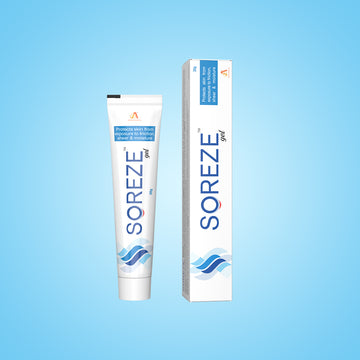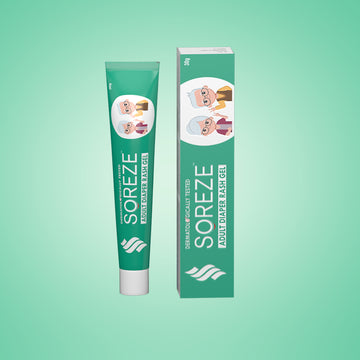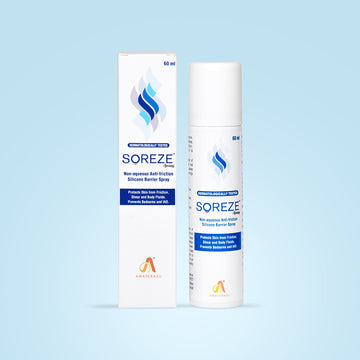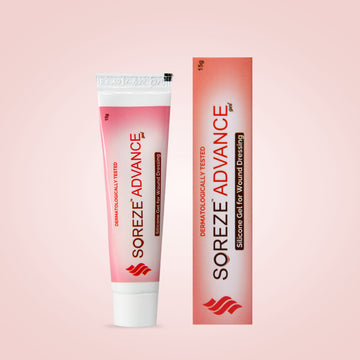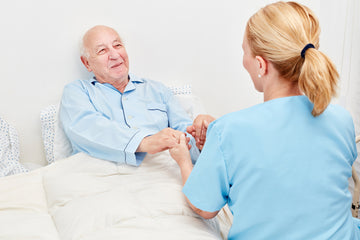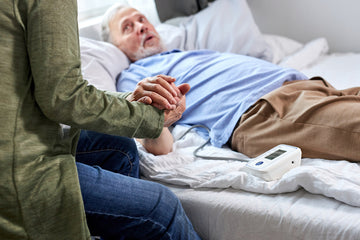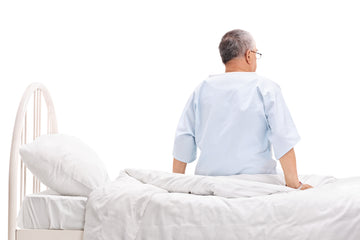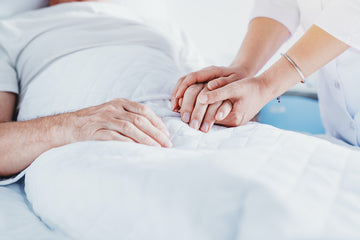
Bed sores, also known as pressure ulcers or decubitus ulcers, are one of the most feared problems for bedridden individuals. Many individuals are unaware of how quickly they can form or how troublesome they can be. Bed sores develop when pressure is applied to a concentrated region of skin for an extended length of time, causing the skin to die and form painful and bothersome sores. Sores are more likely to develop in areas with little muscle and fat, such as the tailbone, hips, heels, and elbows.
A red, aching spot is usually the first sign of a bed sore. The skin in the area begins to perish as blood flow is restricted, giving it a purple appearance. If bed sores aren't treated on time, they might worsen, causing further skin damage and other complications. Not only are these wounds inconvenient, but they also put your patient at risk for infection.
Bed sores can be avoided by taking specific precautions. Here are six ways to prevent bedsores in bedridden individuals.

1. Repositioning or relieving pressure
-
When it comes to bedsore care, frequent changes in position are an effective strategy for lowering the chance of getting bed sores. The positioning method and frequency will be determined by the individual's level of immobility, such as being confined to a bed or chair. Repositioning every 15 to 30 minutes is recommended for persons who are confined to a wheelchair. It is recommended that persons who are confined to a bed change positions at least once every two hours, even during the night. Individuals who are unable to change positions on their own require the assistance of a caregiver or family member.
-
Maintain their skin's health
Skin health and healing are aided by good nutrition. Those at risk of getting bed sores are frequently malnourished, either due to a lack of appetite or an inability to adequately feed themselves. A doctor or dietician can help you figure out how many calories, water, proteins, and minerals you should consume. Supplements like vitamin C or zinc may be added to a regimen to help maintain good skin health even further. To ensure that meals and fluids are consumed, assistance with feeding may be required.
3. Exercise or physical activity
One of the most effective strategies to lessen the incidence of bedsores is to encourage bed-bound individuals to exercise and move regularly. The idea is to reduce the continual pressure while also improving circulation throughout the body.
Seniors who can move around independently should be encouraged to exercise regularly. Those who are unable to move independently may require assistance to complete exercises in bed or a chair.
4. Check your skin daily
Those at risk for pressure injuries should check their skin daily for the first signs of pressure damage, especially around bony areas. The skin changes color as its blood supply declines before open sore forms. Even if you press on lighter skin tones, the pinkness or redness persists. The color may be darker brown on darker skin tones.
5. Invest in Extra Cushioning
Many people find it beneficial to place cushions beneath pressure spots on the body, such as the tailbone or shoulders, to relieve some of the pressure on the skin. Additional cushioning may be beneficial for less mobile people to relieve pressure throughout the body. People who have to stay in bed might use specialized air mattresses to relieve pressure. There are several different sorts of bed equipment that can be beneficial. Gel cushions, cushioned dressings, mobility aids, and lifts are examples of items that can assist persons who are unable to move on their own. Bedsore prevention gel can be used along with air mattresses for optimum results.

6. Keep skin clean and dry
To minimize the danger of sores and infection, keep your skin and linens cleaned and dry. Wet skin stuck against a bed will not dry and will thus develop massive levels of bacteria that can irritate the skin and increase the risk of acquiring sores. Allow for total dryness of the skin. The patient's pillows, sheets, and blankets are all subject to the same rules. An excellent bedsore prevention cream can come in handy when it comes to preventing sores. It's vital to keep the number of harmful germs on your skin to a minimum. In any case, being in an unhealthy atmosphere exposes you to health risks such as skin rashes and discomfort.
Final Thoughts
Your bedsore cure process depends on the stage of your ulcer. The sooner you get it detected, the sooner you can start treatment and get back on your feet. Nothing is more aggravating, unpleasant, or depressing than being restricted in your movements. Both your emotional and physical health are affected by this. Fortunately, bedsore cures are readily managed, and prevented, even though they are a common side effect of forced bed rest.
